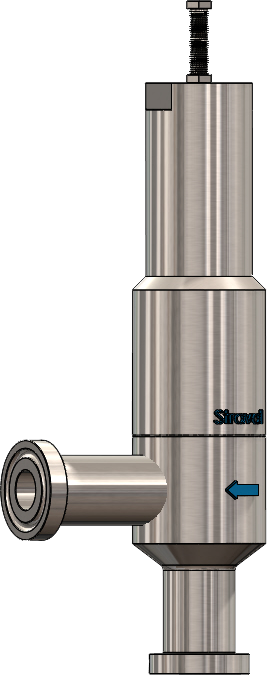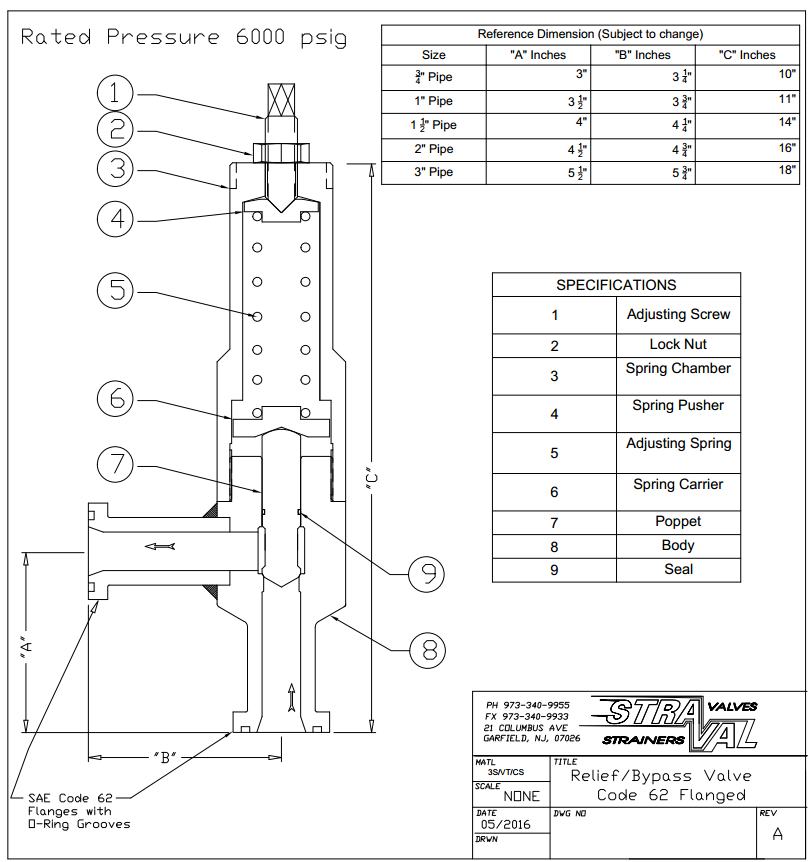- To display pricing, print or e-mail a quotation or order, you must follow these basic steps:+ Click here for general instructions
-
+ Click here for product-specific instructions- Close product-specific instructions
-
Pricing and Ordering Information
First select a size, then the appropriate pressure rating or pressure group. Now a spring range by clicking on the round circles. Then select the proper material for the body #8 and poppet #7 which are the only wetted materials in this valve. Next, select the proper piston seal material #9, which must also be suitable for the media used. The more elastic Buna and Viton & Epdm seals tend to create less of a piston drag than the harder Teflon (PTFE) seal. The softer elastomeric seals produce a much closer band between crack and reseating pressures. Normally viton will handle most solvents, oils and chemicals and can handle most media between 300F to 400 deg F. Next select the Spring chamber #3, spring hardware #1 & #2. The adjusting spring #5 is normally supplied in a chrome silicon steel which is completely protected inside the spring chamber and is not wetted or exposed to the flow media. These are all isolated (non-wetted) from the fluid media and should be selected based on the external environment the valve is exposed to. The carbon steel spring chamber, when selected, is painted on the exterior and interior to withstand normal atmospheric corrosion. After the customized selection is made, click to continue and instructions will be provided to either print or save the selection or to proceed with ordering the item on line. Printing the selection will not commit one to ordering the items selected. Should you have any questions on the product capability or product options, or are having difficulty in making the pricing selections or ordering, please contact us by e-mail or phone between 9AM-5PM Eastern time, Monday-Friday.
To view pricing, typical ship schedules, or place an order, just click on a product tab and make your selection which you can customize. You may print or e-mail yourself a quote 24/7 without factory assistance, or send in a quote request for un-priced items. Check our stock list for quick deliveries.

RBH-05-J518-Code-62 Stainless Steel 6000 PSIG Hydraulic Flanged Code 62 Relief/Bypass Valve
- Stainless Steel, Monel, Hastelloy, Titanium, or Alloy 20
- 3/4"-3" code 62 flanged (see also threaded NPT model BPS-05)
- Available spring pressure ranges from 25 PSIG (1.7 Barg)- 1400 PSIG(97 Barg) standard (custom ranges available)
RBH-05-J518-Code-62 Stainless Steel 6000 PSIG Hydraulic Flanged Code 62 Relief/Bypass Valve
View Pricing/Ordering Instructions
- Stainless Steel, Monel, Hastelloy, Titanium, or Alloy 20
- 3/4"-3" code 62 flanged (see also threaded NPT model BPS-05)
- Available spring pressure ranges from 25 PSIG (1.7 Barg)- 1400 PSIG(97 Barg) standard (custom ranges available)




















































































